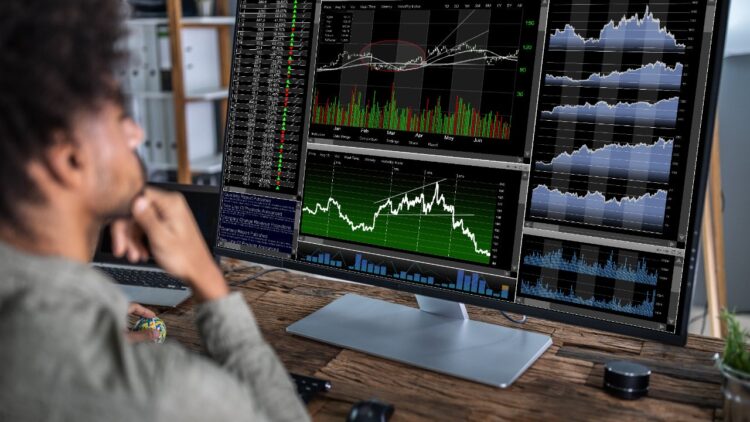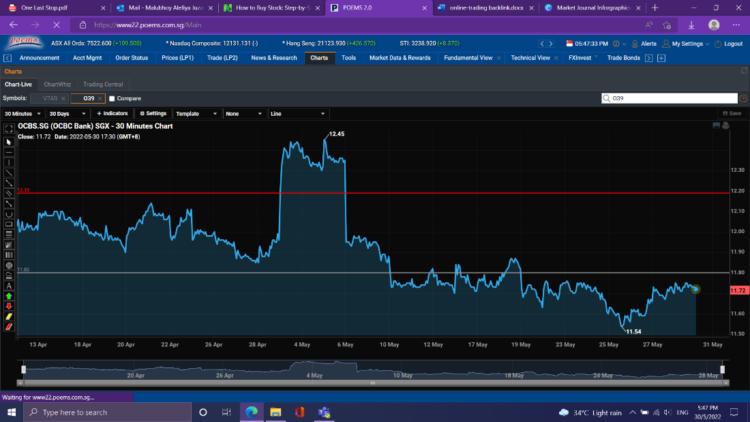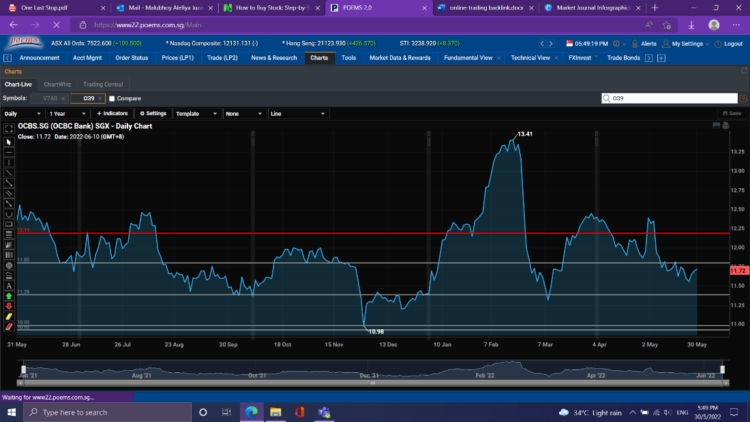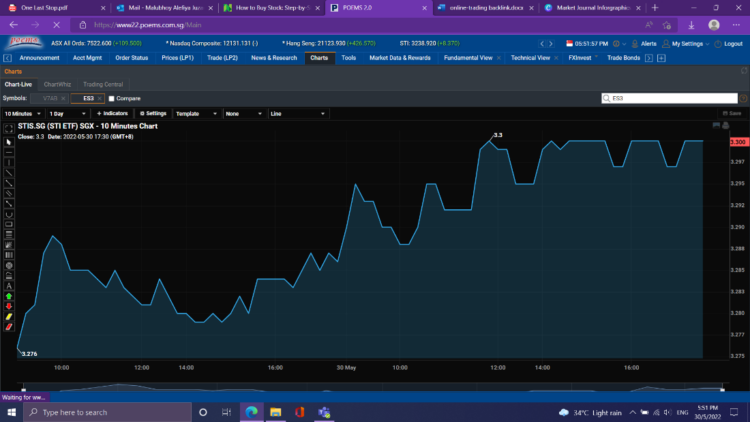It’s quite common to hear people throw around phrases like “Facebook’s stock is moving up” or “crypto stocks have crashed,” but what exactly does the word stock mean? Stocks, also called shares, are essentially a proportion of the equity of a company. When you buy a stock, you buy a part of the company.
Does that mean if you own 5% of a company’s stock, you own 5% of the company? It depends on the percentage of shares the owners have bought, called the shareholders’ equity. It also depends on what kind of stock you hold. There are two types of stock: common and preferred stock. Common stock is the one that gives the stockholder voting rights in a corporation. Preferred stock has no voting rights – but it is called ‘preferred’ because shareholders usually are the first in line to get fixed dividends and any liquidation of a company’s assets in case of bankruptcy.
Many people invest in stocks because stocks tend to have a higher price hike in the long term compared to all other asset classes. Bonds are a popular investment because they provide a fixed payment, but on average, their return is not as high as stocks. Real estate involves a much longer process from search to bidding to paperwork for ownership and looking for tenants for periodical income and maintenance of the property; in comparison, stocks are easily bought and sold on stock exchanges.
Stocks on the stock exchanges have to be bought and sold through brokers, who are licensed by the exchange. Brokers facilitate exchanges to find matches between buyers willing to pay a certain price for a stock and sellers willing to sell at that price. In recent years, this sale is most often conducted through online brokers, which have different platforms to facilitate trading with the discounted commission.
There are also different kinds of investors. Retail investors are people that use their own money to buy stocks on their own behalf. Institutional investors are professionals, who invest on behalf of their organizations using money allocated for that purpose. They typically have access to a large number of funds.
If you decide to begin investing in stocks, you will be one such retail investor. But just because you don’t have the experience or wealth that institutional investors do, doesn’t mean you should go in blind and hope for the best. Here are four basic things to know about online stock trading:
Page Contents
1. Decide whether you’re trading or investing

Source: bankrate.com
In colloquial terms, people often interchange the terms “trade” and “invest” when referring to stocks, but these are not the same thing in action. People who invest in stocks are often those who buy and hold counters over a long period of time, whereas traders buy and sell counters as the market moves for profit.
The main difference is the frequency of returns: long-term investors are not concerned with daily or even weekly fluctuations in price, since the expectation is that stocks will rebound and losses will be recovered. In this way, they take advantage of the trend that stocks grow over time, and they cash out after some years.
Traders, on the other hand, take advantage of short-term market highs and lows to make more immediate profits. They have a higher frequency of payout, though returns may not be comparable to that of investors. However, staying abreast of market changes can be advantageous in order to liquidate, or sell off, stocks projected to crash quickly.
2. Choose stocks to invest in
Now that you know why you’re investing, you should choose sectors that you believe have potential, and narrow down to stocks that you think can be successful for. Keeping updated with the business section of the newspaper isn’t enough. Whatever public knows has probably been priced into stock already. One of ways to know future plans for companies is to hear management plans through Annual General Meeting (AGM), which happens once a year. You can read stock research from research companies, who meet companies on a regular basis to understand management and their plan and verify their financial statements.
3. Time a market
For long term investment, it isn’t necessary to time market, but you can use technical analysis to look at entry price. First, identify the trend line. This is the visual progression of the price of the counter, which means if the line goes up, the price has gone up, and if the line declines, the prices have fallen. The exact price can be determined by reading the corresponding number on the X-Axis, or on some websites, hovering over the part of the line you want to check can also show the price. It is usually described in “points,” where one point is usually equal to one dollar.
Second, adjust the timeframe. It is possible to view a stock across decades or even watch as it updates minute by minute when the exchange is open. As you can probably tell, traders usually zoom in to the daily or weekly time charts. Investors, on the other hand, would probably be more concerned with the longer timeframes, and view how a stock has improved over the past few months or even years, before deciding to buy in. (See Figure 1 for a stock chart by month).

Figure 1
You can check out the POEMS stock trading account to view a variety of different timeframes to compare prices. However, both traders and investors are concerned with some comparative figures, such as year on year (YoY) or year to date (YTD). YoY shows the difference in stock price between now and one year ago (see Figure 2), and YTD shows the difference between current price and price at the beginning of the calendar year. These can be used as a gauge for how much the counter has and will continue to grow.

Figure 2
4. Economic Indices
Adjusting the timeframe can help one to better understand the broader or detailed growth of a single counter, but it may not accurately reflect the market as a whole. The state of the economy, while partly determined by the trend lines of individual stocks, is actually indicated by certain economic indices.
These indices, also called economic indicators, combine and average the trends of individual stocks to create a measure of the wider market across various counters. For more details, check out this trading lesson on HowToTrade.com. By analyzing the charts of an index (similar to how we read stock charts), we can understand whether the economy is in recession if the trend line has sharply dropped.
There are many such indices which take into account different stocks. The most commonly referred to indices are Dow Jones Industrial Average (DJIA), which tracks 30 major companies, and the S&P 500, which tracks 500 companies as the name indicates. The Nasdaq Composite tracks all stocks that trade on the Nasdaq Stock Exchange. There are also country-specific indices which reflect a country’s economic state. For example, the Straits Times Index tracks the 30 biggest companies on the Singapore Exchange (See Figure 3).

Figure 3
5. How to Make your First Trade
Once you have an understanding of your own goals, as well as a basic understanding of how to interpret fundamentals, charts, economic indicators, you can try your hand at trading. Before you can make your trade, however, you must select a broker.
There are a variety of brokers to choose from, but you should choose brokers that you trust to help you make well-informed investment decisions. Some brokers may also require you to have a minimum amount in your account, which may not be feasible. This is a well-established platform that has no minimum and takes a minimal commission fee of 0.08%. It is well suited to allow you to invest in various financial products, including stocks, and covers 11 global markets, including Singapore and the US.
In general, both traders and investors should seek to diversify the counters they put money in. A good way to do this is to invest in exchange-traded funds (ETFs), which are essentially baskets of stock. Purchasing an ETF means that you buy multiple securities, which protect you from extreme fluctuations from a single stock. A common ETF tracking various stocks is SPDR S&P 500, which holds the same stocks as the S&P 500 index. There are also ETFs that track commodities like gold or sectors like oil, which often have high returns.





